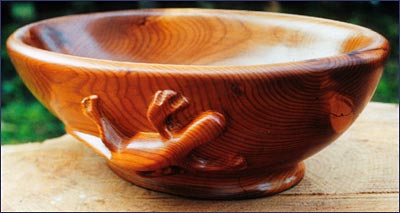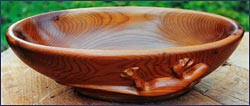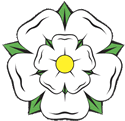 |
||||||||||||||
|
|
||||||||||||||
Oval Bowl
16 in. x 9 in.(w) x 5 in. This bowl is carved from a solid piece of yew. The piece was cut from a tree stump in Maple Bay, British Columbia. The material has several knots and shakes which have been dealt with, and included in the carving of the bowl. The bowl stands upon an oval foot, in which you will find the name of the maker, marked with a stamped impression. The lay-out for the bowl would have been no more than a simple pencil drawing directly onto the blank. Once the foot of the bowl was made, then the bowl was hollowed with a gouge and mallet. A steel scraper was used to produce the smooth finish. Sometimes scrapers have to be specially ground to suit the contours of the bowl. To make the outside surface of the bowl, the waste is normally removed with a combination of a chisel, a plane and a spokeshave. The thickness of the 'wall' of the bowl has to be gauged, usually by feel. The exterior of the bowl is finished with a sharp scraper. The edge of the bowl has to be smooth and even. This important feature is usually left until the very last.
This bowl is decorated with the form of a newt on its outside surface. Because the newt is cut from the solid yew, the incorporation of this carving had to be planned from the beginning of the project - the pencil lay-out stage. Of course the shaping of the outside of this bowl combined with the carving of the creature, caused this bowl to become a more complex piece of woodwork. The newt is often found on the work of Peter Leonard Bailey. It represents a guild mark used by his family for several generations. This bowl is designed for use with food, like fruit, bread, salad etc. It is finished with vegetable oil. Its dull sheen may be maintained easily with olive oil. It may be cleaned with a dampened cloth, but it should not be immersed in, or soaked with water. |
||||||||||||||
| courses : tools : school : principal teacher : gallery : home | ||||||||||||||
|


